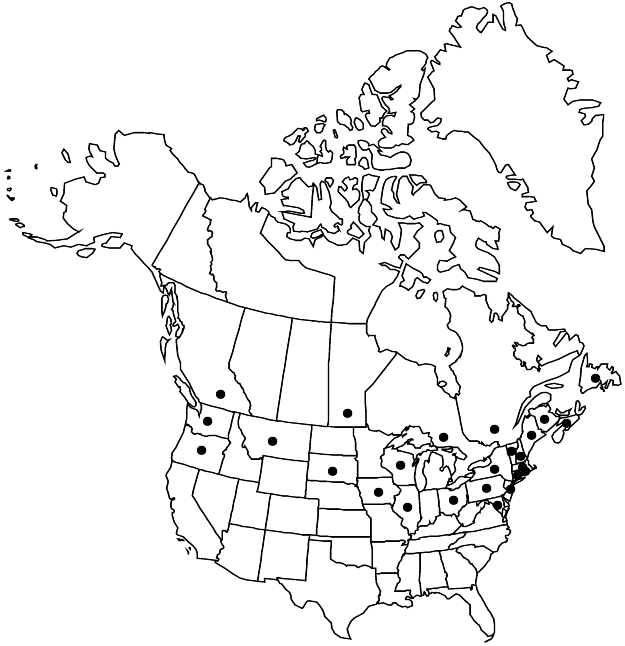Silene dioica
Man. Herbor. Suisse, 146. 1811.
Plants perennial; taproot slender. Stems ascending, decumbent at base, branched, shortly rhizomatous, to 80 cm, softly pubescent, ± glandular, at least distally, rarely subglabrous. Leaves sessile at mid and distal stem, petiolate to spatulate proximally; petiole equaling or longer than blade of basal leaves; blade ovate to elliptic, 3–13 cm × 10–50 mm (not including petiole), apex acute to acuminate, sparingly pubescent, densely so on abaxial midrib. Inflorescences dichasial cymes, several- to many-flowered, open, bracteate; bracts lanceolate, 4–20 × 2–7 mm, herbaceous, softly hairy throughout with long-septate hairs, not glandular, or with some glandular hairs. Pedicels ascending, 0.2–3 cm, usually shorter than calyx. Flowers unisexual, some plants having only staminate flowers, others having only pistillate flowers, 20–25 mm diam.; calyx 8–12-veined, campanulate, narrowly so in staminate flowers, broadly in pistillate, 10–15 × to 7 mm in flower, 11 mm broad in fruit, herbaceous, margins dentate, softly pubescent, lobes 5, erect, lanceolate, 2–3 mm; petals bright pink, clawed, claw equaling or longer than calyx, limb spreading horizontally, broadly obovate, unlobed or 2-lobed, to 12 × 12 mm, appendages 4, ca. 1 mm; stamens and stigmas equaling petal claw; styles 5. Capsules broadly ovoid to globose, equaling and often splitting calyx, opening by 5 (splitting into 10) revolute teeth; carpophore absent. Seeds dark brown to black, broadly reniform, plump, 1–1.6 mm, densely and evenly papillate. 2n = 24.
Phenology: Flowering summer.
Habitat: Woodlands, hedges, gardens, riverbanks, open waste places
Elevation: 0-500 m
Distribution

Introduced; B.C., Man., N.B., Nfld. and Labr. (Nfld.), N.S., Ont., Que., Conn., Ill., Iowa, Maine, Md., Mass., Mont., N.H., N.J., N.Y., Ohio, Oreg., Pa., R.I., S.Dak., Vt., Wash., Wis., Europe.
Discussion
Silene dioica is closely related to S. latifolia and completely interfertile with it. The two species hybridize wherever they grow in close proximity, and the offspring (S. hampeana Meusel & K. Werner) usually have pale pink flowers. Silene dioica and S. latifolia are difficult to separate in herbarium material unless flower color has been noted. The characters that distinguish S. dioica are the usually dense, long, and soft pubescence covering at least the distal portion of the plant; the broad, almost globose, thin, and brittle capsule with revolute teeth; and the softer, thinner, usually broader leaves. Occasionally, double-flowered plants are encountered as garden escapes.
Selected References
None.